Hanoi, the heart of Vietnam, captivates visitors not only with its ancient streets and bustling street vendors but also with its ancient villages that preserve the nation’s soul. Among them, Duong Lam ancient village, a hidden gem nestled in the land of Son Tay, is a must-visit destination for those seeking to return to their roots and explore unique cultural and historical values. Let’s explore the timeless beauty of this village with Discovery Around The World!
Duong Lam Ancient Village – A Living Museum of Vietnamese Architecture and Culture
Duong Lam, an ancient village in Son Tay town, Hanoi, is known as a “living museum” of Vietnamese architecture and culture. It’s not just a single village but a combination of nine ancient villages, each with its own unique beauty, harmoniously blending together to create a unified whole, preserving distinctive traditional values for hundreds of years. More notably, Duong Lam is the homeland of two enlightened kings of the nation: Phung Hung and Ngo Quyen.

Getting to Duong Lam
Duong Lam ancient village is located about 44km west of the center of Hanoi. Visitors can easily travel by motorbike, car, or bus. If traveling by motorbike or car, you can follow Thang Long Avenue or National Highway 32. If traveling by bus, you can take bus number 71 or 92 from My Dinh bus station or Yen Nghia bus station.
Entrance Fees
- Entrance ticket: 20,000 VND/person
- Parking: 10,000 VND/vehicle
- Bike rental: 30,000 – 50,000 VND/hour or 80,000 – 100,000 VND/day
Exploring Unique Destinations in Duong Lam Ancient Village
Coming to Duong Lam, visitors will have the opportunity to admire ancient architectural works, unique laterite stone houses, and historical relics imbued with the marks of time.
Mong Phu Village Gate and Ancient Banyan Tree
Mong Phu village gate, built in 1833, is a symbol of Duong Lam ancient village. The village gate is located next to a 300-year-old banyan tree, creating a peaceful and ancient scene. The towering banyan tree stands as a historical witness, having witnessed many ups and downs of the village.
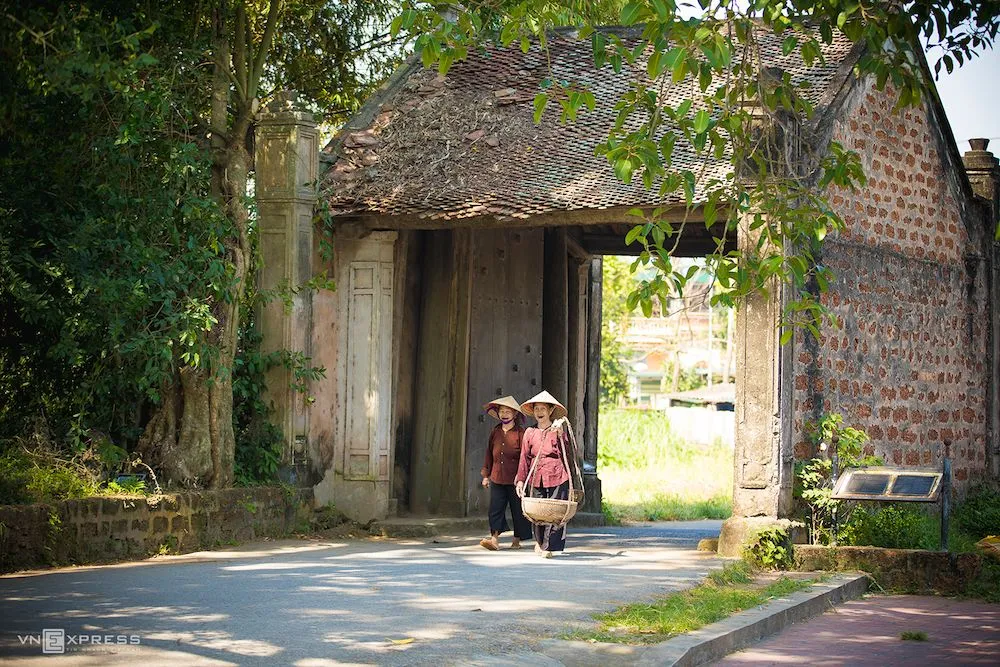
Ancient Laterite Stone Houses
A special feature of Duong Lam ancient village is the houses built of laterite stone, a natural material with a dark yellow color, creating a unique and nature-friendly beauty. Laterite stone not only brings aesthetic beauty but also has good insulation, keeping houses cool in the summer and warm in the winter.
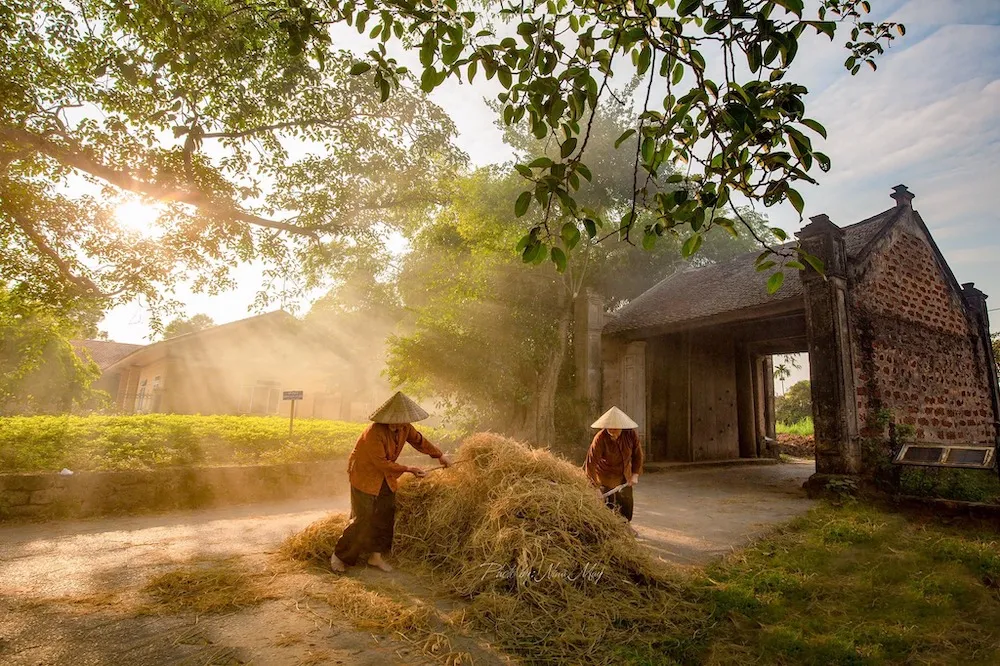
Ancient House of Mrs. Dien – A 200-Year-Old House
The ancient house of Mrs. Dien is one of the oldest houses in Duong Lam, dating back more than 200 years. The house still retains the traditional architecture of the Northern Delta region, with bright red tile roofs, sturdy ironwood columns, and ancient household items. Here, visitors can not only admire the unique architecture but also enjoy nước vối (a local herbal tea) and chè lam (sweet glutinous rice cake), local specialties of the village.
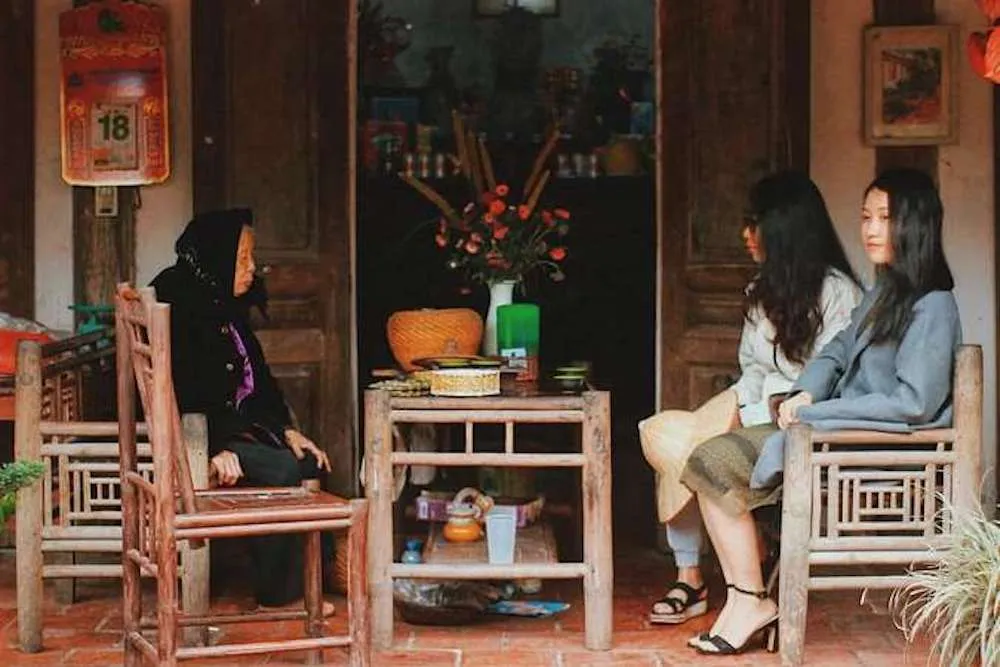
Mong Phu Communal House – A Masterpiece of Vietnamese Architecture
Mong Phu communal house is a unique architectural work, harmoniously combining Vietnamese and Muong styles. The communal house was built nearly 400 years ago, with a large area and sophisticated architecture. Inside the communal house, there are many horizontal lacquered boards, parallel sentences, and valuable worshiping items.
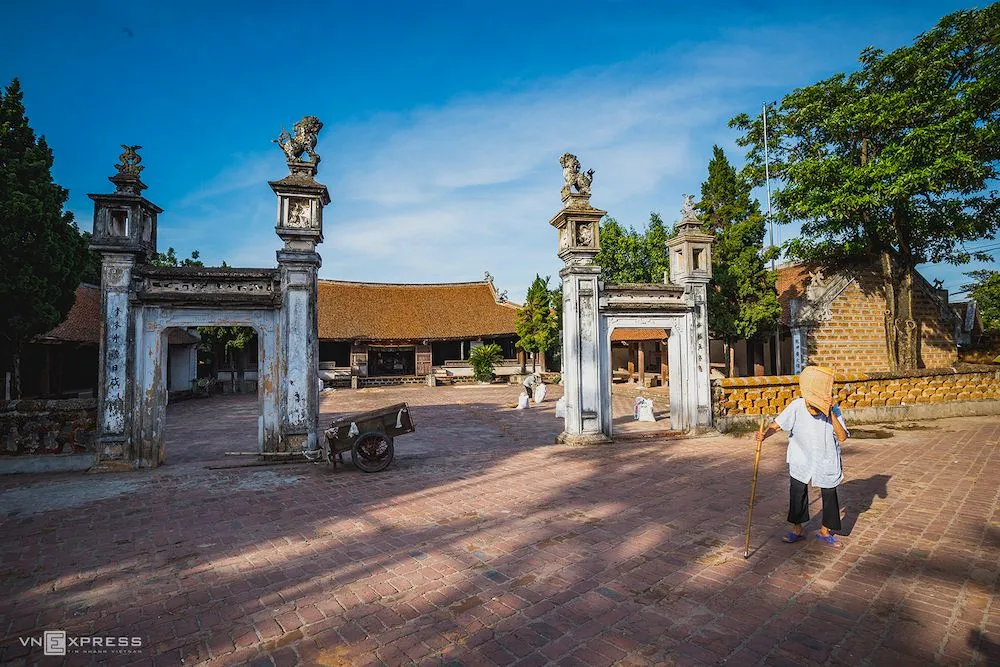
Ancient House of Mr. Hung – The Oldest House
The ancient house of Mr. Hung is the oldest house in Mong Phu village, built in 1649. The house still retains its original architecture, with gates made of earth and rice husks, mossy tile roofs, and ancient household items. Here, visitors will hear stories about the history of the house and the family lineage.
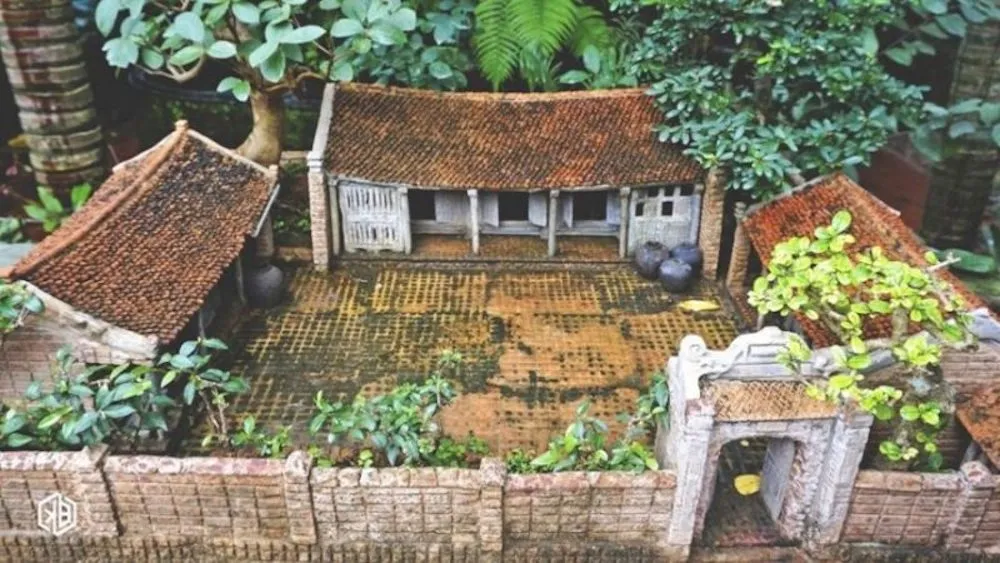
Ancient House of Mr. The and Traditional Soy Sauce Making
The ancient house of Mr. The is famous for its traditional soy sauce making. The house is built entirely of wood, without using iron nails. Here, visitors will witness firsthand the traditional soy sauce making process and enjoy the distinctive flavor of Duong Lam soy sauce.
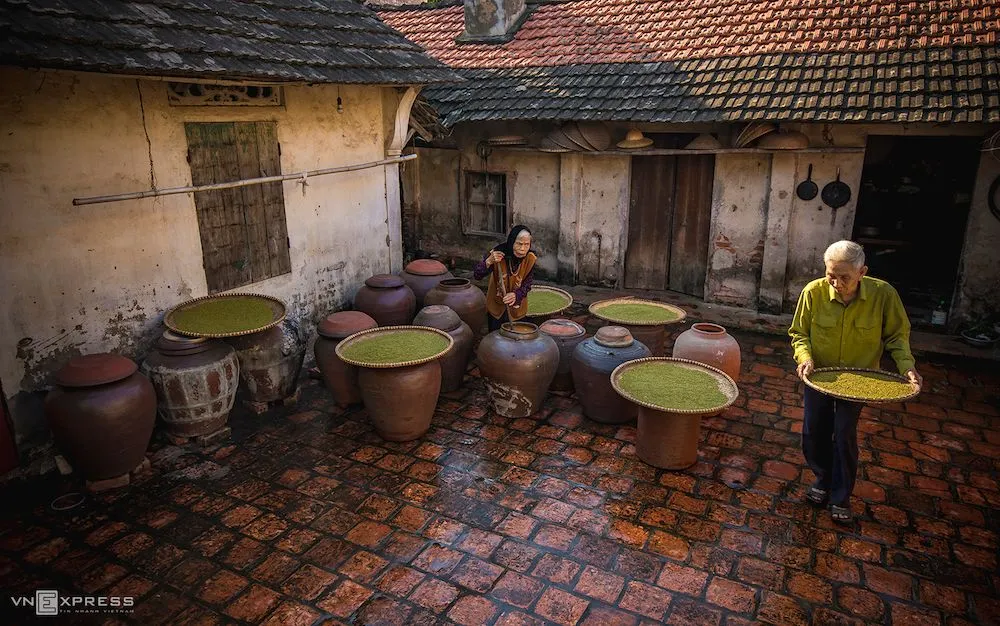
Enjoying Village Coffee and Local Specialties
In addition to famous tourist attractions, visitors can also relax at small cafes in the village, enjoying coffee and local specialties such as bánh chè lam, kẹo lạc (peanut candy), tương nếp cái hoa vàng (sticky rice soy sauce)…
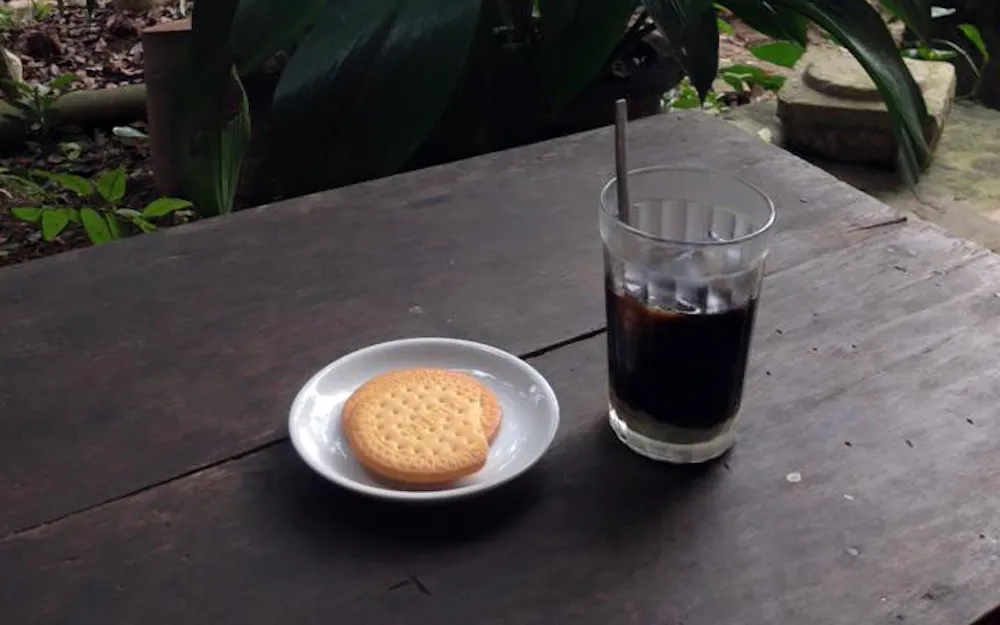
Conclusion
Duong Lam ancient village is an attractive destination for those who want to explore the cultural and historical beauty of Vietnam. Coming to Duong Lam, visitors will immerse themselves in the peaceful atmosphere of the countryside, admire ancient architectural works, and experience unique traditional cultural features. Come and feel the timeless beauty of this ancient village!